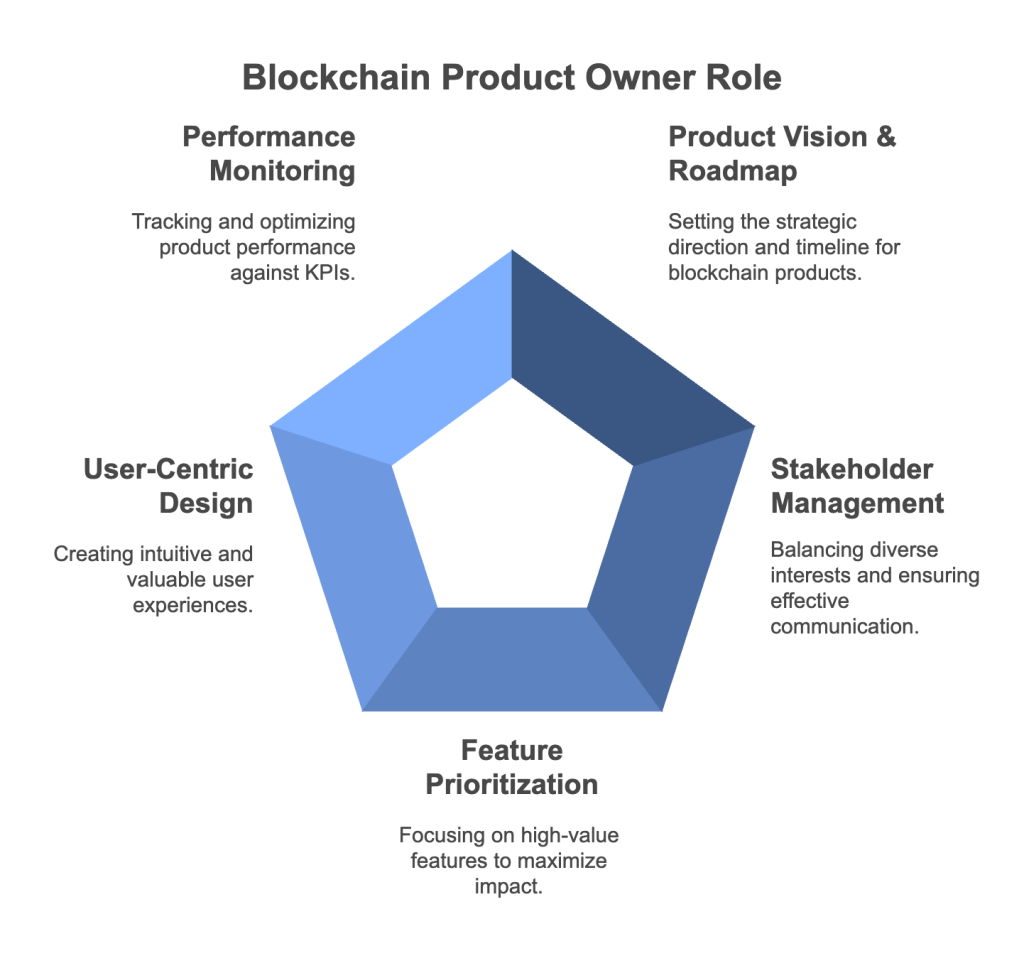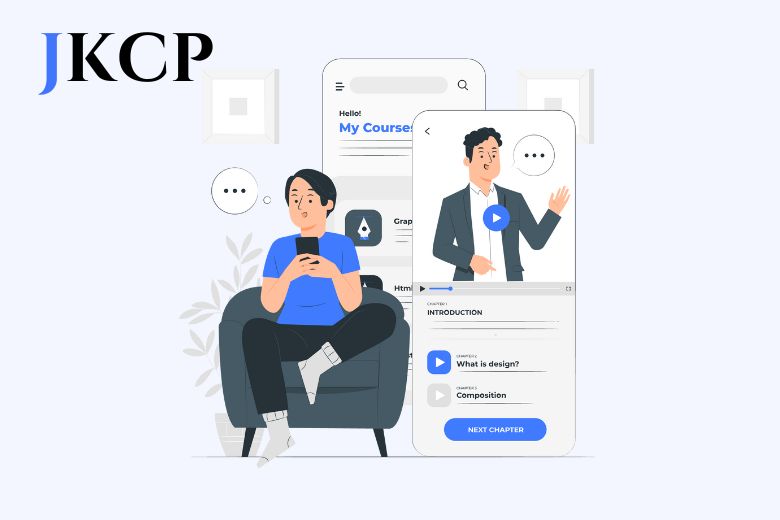The Role of a Blockchain Product Owner: Responsibilities and Skills
Blockchain products are becoming integral to industries, from finance to supply chains. Behind these products is the Blockchain Product Owner (BPO) – a key player ensuring blockchain solutions meet business and user needs. Unlike traditional products, blockchain-based products require a profound understanding of the technology and strategic vision. Let’s dive into the role, key responsibilities, and essential skills needed to excel as a Blockchain Product Owner in 2025.
What Does a Blockchain Product Owner Do?
A Blockchain Product Owner bridges the technical development team and business stakeholders. They define the product vision, gather requirements, prioritize features, and ensure the product aligns with the business strategy. This role requires a solid grasp of blockchain technology, market trends, and how decentralized solutions can solve real-world problems.
The BPO focuses on the “what” and the “why” of the product, ensuring that the development team understands its purpose and guiding the project toward its goals. This role is crucial because it ensures blockchain products are developed with technical rigor and market relevance.
Key Responsibilities of a Blockchain Product Owner
The responsibilities of a Blockchain Product Owner cover a range of tasks, but they all revolve around ensuring the blockchain product is delivered successfully. Here’s a closer look at some of the main duties:
1. Defining the Product Vision and Roadmap
A Blockchain Product Owner is responsible for setting the long-term vision of the product and crafting the roadmap to achieve that vision. This involves understanding users’ needs, market trends, and the potential of blockchain technology. The BPO works closely with stakeholders to understand the business objectives and translates those into a strategic product plan.
For example, a Blockchain Product Owner working on a supply chain tracking system would need to understand logistics companies’ pain points and how blockchain can solve issues like transparency and traceability. From there, the BPO defines the product features, functionalities, and timeline for delivery.
2. Managing Stakeholder Expectations
One of the most crucial parts of the role is managing the expectations of various stakeholders, including business leaders, developers, investors, and users. A Blockchain Product Owner is the point of contact for all stakeholders, ensuring their interests are considered during development. This requires flawless communication skills and the ability to explain technical concepts to non-technical stakeholders.
For instance, if a blockchain project is being developed for a financial institution, the BPO would work with legal teams to ensure regulatory compliance while managing the project’s scope and timeline with the engineering team.

3. Prioritizing Features and Requirements
Since blockchain technology can be complex and resource-intensive, the Blockchain Product Owner must prioritize features that bring the most value to the users and the business. The BPO defines the product backlog, ranks the features, and ensures that the most critical elements are first developed.
Using Agile methodologies, the BPO manages the sprint cycles, ensuring that the team is focused on high-priority tasks and constantly delivers value. For example, in developing a decentralized finance (DeFi) platform, features like security and user experience might take precedence over adding additional tokens or complex smart contract functionalities in the initial stages.
4. Ensuring User-Centric Design
User experience (UX) is a critical aspect of any product, but it’s even more important in blockchain. A flood of blockchain applications, like wallets or decentralized apps (dApps), can be difficult for the average user to navigate. The Blockchain Product Owner must ensure the product is intuitive, easy to use, and offers real value to the user.
This involves working closely with UX/UI designers to ensure the product’s interface is secure and user-friendly. For instance, if you’re building a decentralized marketplace, ensuring a smooth onboarding process and a seamless transaction flow will be a priority.
5. Monitoring and Reporting Product Performance
Once the blockchain product is live, the BPO needs to track its performance against the established KPIs (Key Performance Indicators). This could involve measuring user engagement, transaction volumes, or the scalability of the blockchain network. By continuously evaluating how the product performs, the BPO can identify areas for improvement and optimize the product over time.
They also provide regular updates to stakeholders, ensuring everyone is on the same page regarding progress, challenges, and successes.
Essential Skills for a Blockchain Product Owner
A Blockchain Product Owner needs unique skills that blend technical and business expertise to succeed in this role. Below are the top skills that will help you thrive in this position in 2025.
1. Understanding of Blockchain Technology
It’s not enough to just have a general understanding of blockchain. As a Blockchain Product Owner, you need to have a deep knowledge of how decentralized systems work, including the differences between various blockchain platforms (like Ethereum, Polkadot, and Solana), consensus mechanisms (like Proof of Work and Proof of Stake), and the role of smart contracts in creating decentralized applications.
For example, understanding Ethereum’s scalability and gas fee limitations could influence the decision to use a Layer-2 solution or explore a different platform for your project.
2. Strong Communication Skills
A Blockchain Product Owner must communicate complex blockchain concepts to technical and non-technical stakeholders. Strong communication is key in explaining smart contracts to a business leader or outlining the product roadmap to a developer. The ability to translate technical jargon into business-friendly language is a must.
You will also need to negotiate with different teams, clarify requirements, and ensure everyone is aligned on the product vision.

3. Agile Product Management Experience
Blockchain development frequently follows Agile methodologies, so a Blockchain Product Owner must be comfortable with Agile frameworks like Scrum or Kanban. A BPO’s daily responsibilities include managing product backlogs, defining sprint goals, and facilitating sprint reviews.
Experience with tools like Jira, Trello, or Asana can help you organize tasks and track progress in a collaborative environment.
4. Business Acumen
A Blockchain Product Owner must strongly understand business objectives and market trends. This means knowing how blockchain can solve a problem and how to position the product to capture market share. A keen business sense is essential when conducting market research, analyzing competition, or identifying monetization strategies.
For example, when developing a new product for a DeFi application, understanding the competitive landscape and user behavior trends will help guide product decisions and prioritize features.
5. Problem-Solving and Strategic Thinking
As blockchain is still a relatively new technology, the path to creating a successful product isn’t always clear-cut. A Blockchain Product Owner must be able to think critically, solve problems, and make decisions that align with the product’s long-term goals.
This could involve resolving scalability or transaction costs while ensuring the product stays aligned with the overall vision.
Conclusion
The role of a Blockchain Product Owner is a dynamic and crucial one. As blockchain technology disrupts industries, the demand for skilled product owners who can navigate blockchain development’s technical and business sides will only grow. By mastering the responsibilities and honing the right skills – such as blockchain expertise, Agile management, and strategic thinking – you’ll be well on your way to leading innovative blockchain projects that make a real impact in 2025 and beyond.




